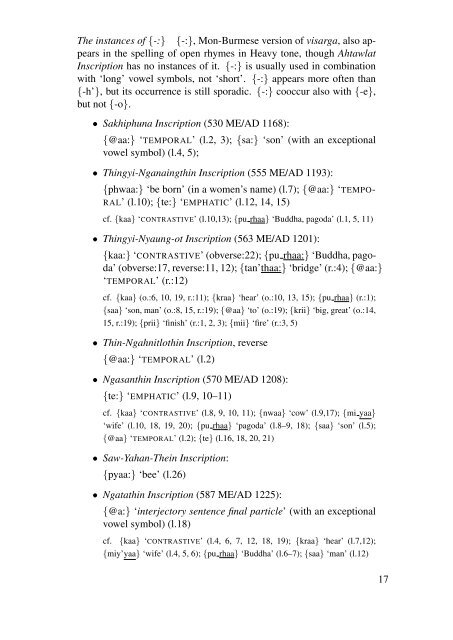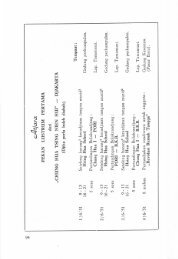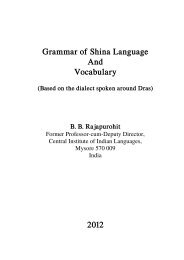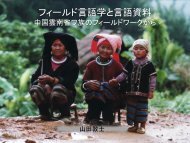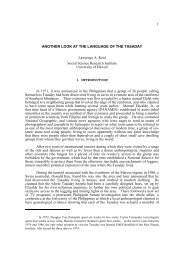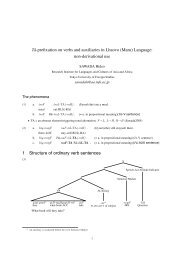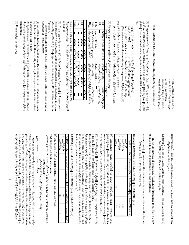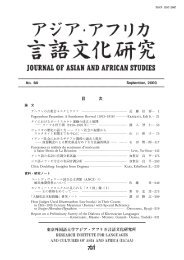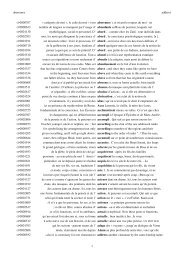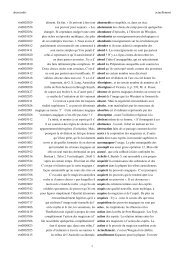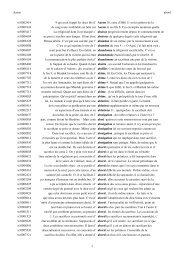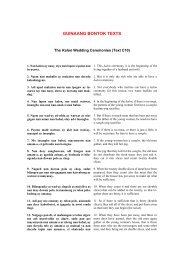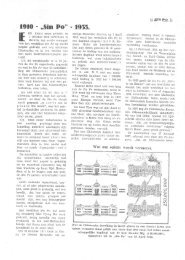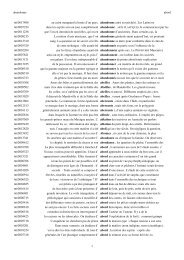Tonal Notation of Indic scripts in Mainland Southeast Asia
Tonal Notation of Indic scripts in Mainland Southeast Asia
Tonal Notation of Indic scripts in Mainland Southeast Asia
You also want an ePaper? Increase the reach of your titles
YUMPU automatically turns print PDFs into web optimized ePapers that Google loves.
The <strong>in</strong>stances <strong>of</strong> {-:} {-:}, Mon-Burmese version <strong>of</strong> visarga, also appears<br />
<strong>in</strong> the spell<strong>in</strong>g <strong>of</strong> open rhymes <strong>in</strong> Heavy tone, though Ahtawlat<br />
Inscription has no <strong>in</strong>stances <strong>of</strong> it. {-:} is usually used <strong>in</strong> comb<strong>in</strong>ation<br />
with ‘long’ vowel symbols, not ‘short’. {-:} appears more <strong>of</strong>ten than<br />
{-h’}, but its occurrence is still sporadic. {-:} cooccur also with {-e},<br />
but not {-o}.<br />
• Sakhiphuna Inscription (530 ME/AD 1168):<br />
{@aa:} ‘TEMPORAL’ (l.2, 3); {sa:} ‘son’ (with an exceptional<br />
vowel symbol) (l.4, 5);<br />
• Th<strong>in</strong>gyi-Ngana<strong>in</strong>gth<strong>in</strong> Inscription (555 ME/AD 1193):<br />
{phwaa:} ‘be born’ (<strong>in</strong> a women’s name) (l.7); {@aa:} ‘TEMPO-<br />
RAL’ (l.10); {te:} ‘EMPHATIC’ (l.12, 14, 15)<br />
cf. {kaa} ‘CONTRASTIVE’ (l.10,13); {pu rhaa} ‘Buddha, pagoda’ (l.1, 5, 11)<br />
• Th<strong>in</strong>gyi-Nyaung-ot Inscription (563 ME/AD 1201):<br />
{kaa:} ‘CONTRASTIVE’ (obverse:22); {pu rhaa:} ‘Buddha, pagoda’<br />
(obverse:17, reverse:11, 12); {tan’thaa:} ‘bridge’ (r.:4); {@aa:}<br />
‘TEMPORAL’ (r.:12)<br />
cf. {kaa} (o.:6, 10, 19, r.:11); {kraa} ‘hear’ (o.:10, 13, 15); {pu rhaa} (r.:1);<br />
{saa} ‘son, man’ (o.:8, 15, r.:19); {@aa} ‘to’ (o.:19); {krii} ‘big, great’ (o.:14,<br />
15, r.:19); {prii} ‘f<strong>in</strong>ish’ (r.:1, 2, 3); {mii} ‘fire’ (r.:3, 5)<br />
• Th<strong>in</strong>-Ngahnitloth<strong>in</strong> Inscription, reverse<br />
{@aa:} ‘TEMPORAL’ (l.2)<br />
• Ngasanth<strong>in</strong> Inscription (570 ME/AD 1208):<br />
{te:} ‘EMPHATIC’ (l.9, 10–11)<br />
cf. {kaa} ‘CONTRASTIVE’ (l.8, 9, 10, 11); {nwaa} ‘cow’ (l.9,17); {mi yaa}<br />
‘wife’ (l.10, 18, 19, 20); {pu rhaa} ‘pagoda’ (l.8–9, 18); {saa} ‘son’ (l.5);<br />
{@aa} ‘TEMPORAL’ (l.2); {te} (l.16, 18, 20, 21)<br />
• Saw-Yahan-The<strong>in</strong> Inscription:<br />
{pyaa:} ‘bee’ (l.26)<br />
• Ngatath<strong>in</strong> Inscription (587 ME/AD 1225):<br />
{@a:} ‘<strong>in</strong>terjectory sentence f<strong>in</strong>al particle’ (with an exceptional<br />
vowel symbol) (l.18)<br />
cf. {kaa} ‘CONTRASTIVE’ (l.4, 6, 7, 12, 18, 19); {kraa} ‘hear’ (l.7,12);<br />
{miy’yaa} ‘wife’ (l.4, 5, 6); {pu rhaa} ‘Buddha’ (l.6–7); {saa} ‘man’ (l.12)<br />
17


